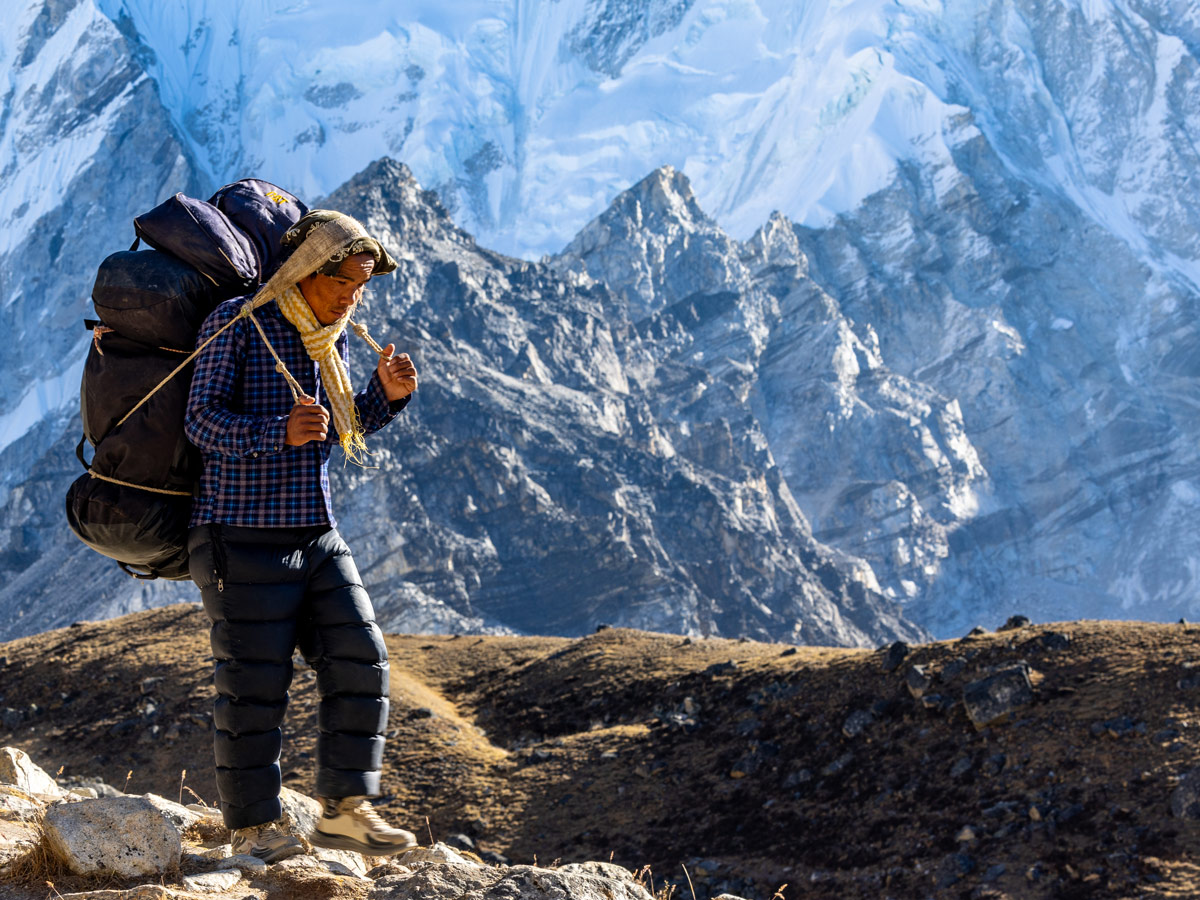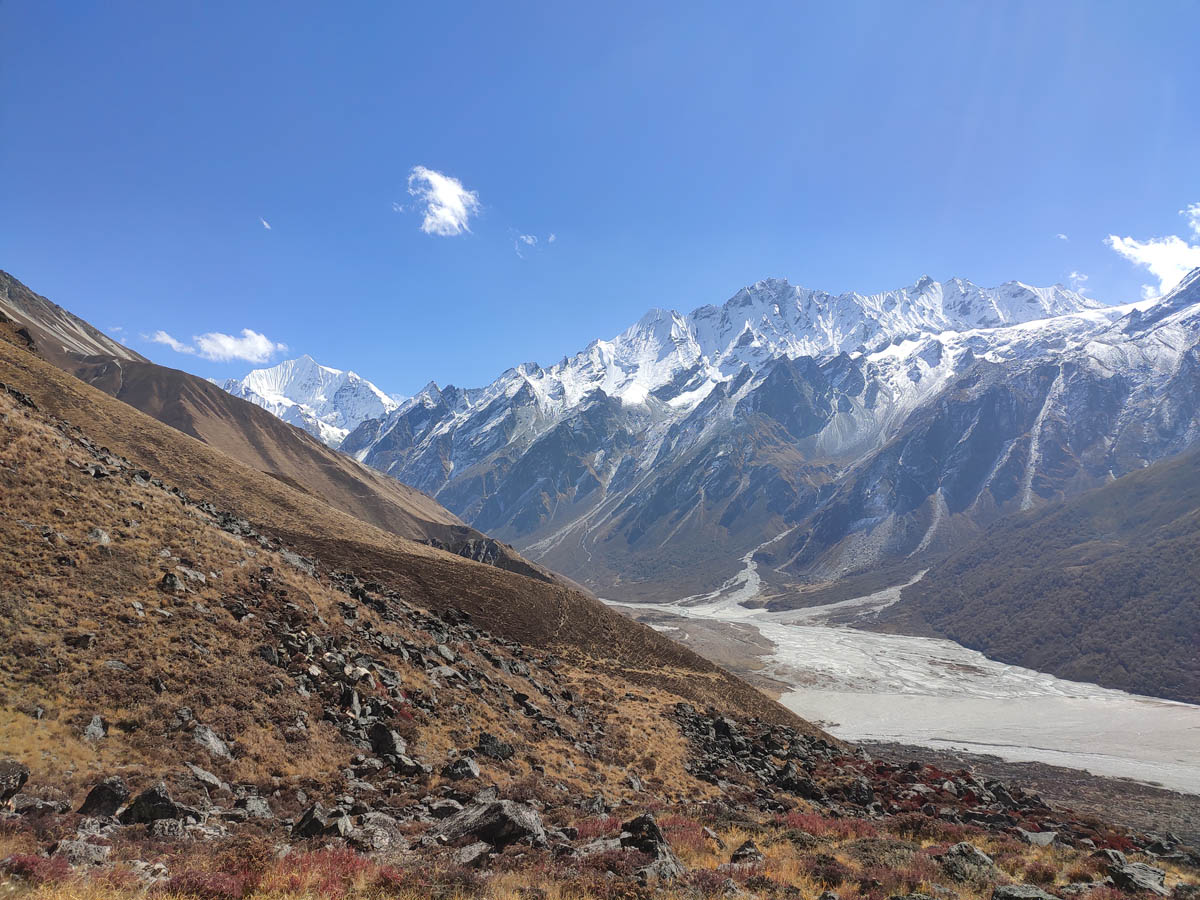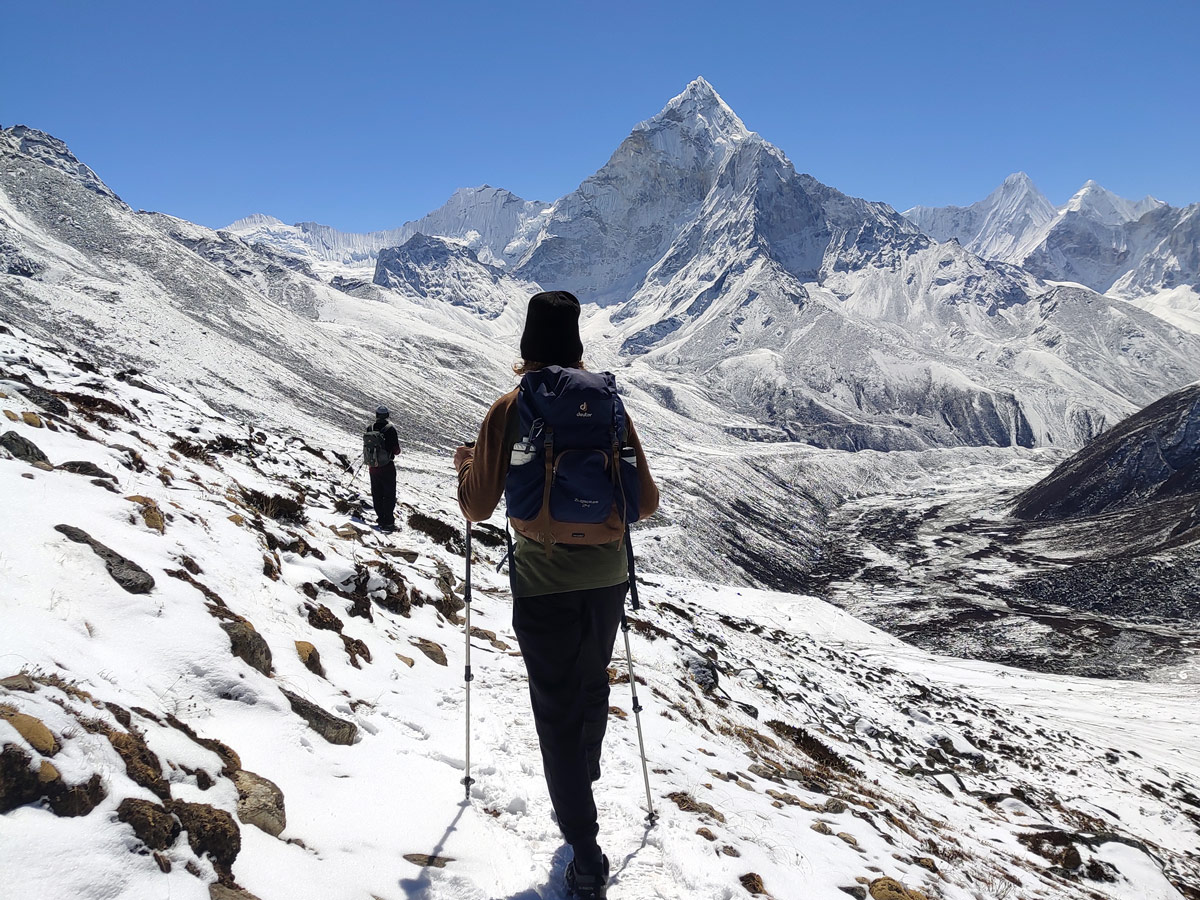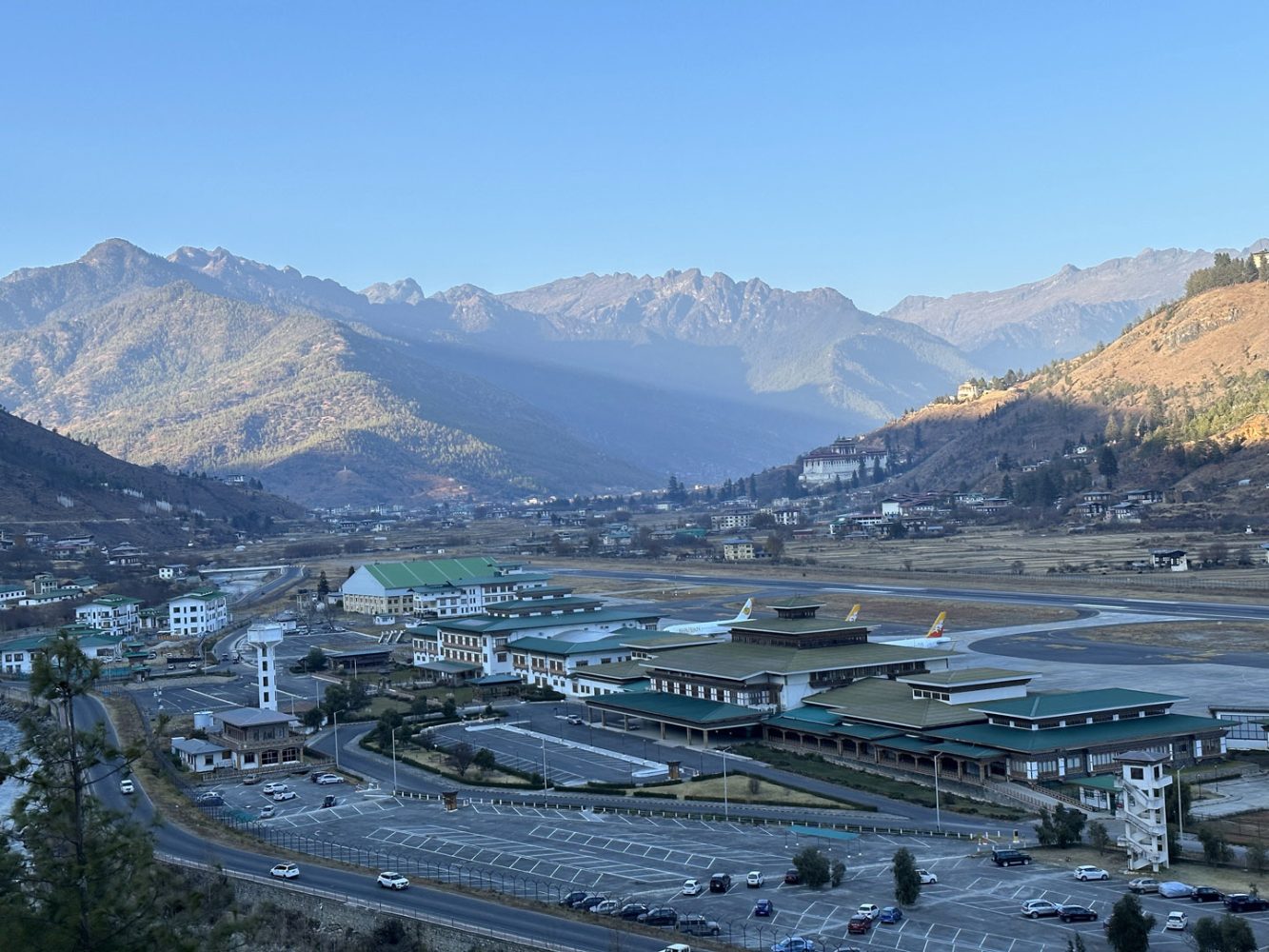Often referred to as the ‘Guardians of the Himalayas’, the Sherpas are a common name that you will come across in basically anything that you read related to the Himalayas, trekking in Everest, or mountain expeditions.
So, who are the Sherpas and why are they such a recurring name in iconic adventures like the Everest Base Camp trek to any other Himalayan expeditions? Basically, Sherpas are the backbone and the unsung heroes living in the Himalayas.
In this blog, we learn about the life of Sherpas and their contribution in mountaineering in detail.
Historical Background
The Sherpas have an ancient and rich historical background that is intertwined with several regions of Tibet and Nepal alike. Theirs is a story of migration, adaptation, and forming a strong connection with the Himalayas.
The Sherpas are believed to have their roots in the Kham region of Eastern Tibet from where they originated. This is also why they got the name ‘Sherpa’ as it translates to ‘people from the east’.
However, following religious conflicts of Mahayana Buddhism and due to new opportunities and pastures, they migrated towards the Solu-Khumbu region of Nepal as it was a crucial trade route between Nepal and Tibet and had many grazing grounds for herds.
This migration is speculated to have taken place in between the 10th to 15th centuries AD. Based on the time of migration, the Sherpas got categorized into four different clans collectively called ‘ru’: Minyagpa, Thimmi, Sertawa, and Chawa.
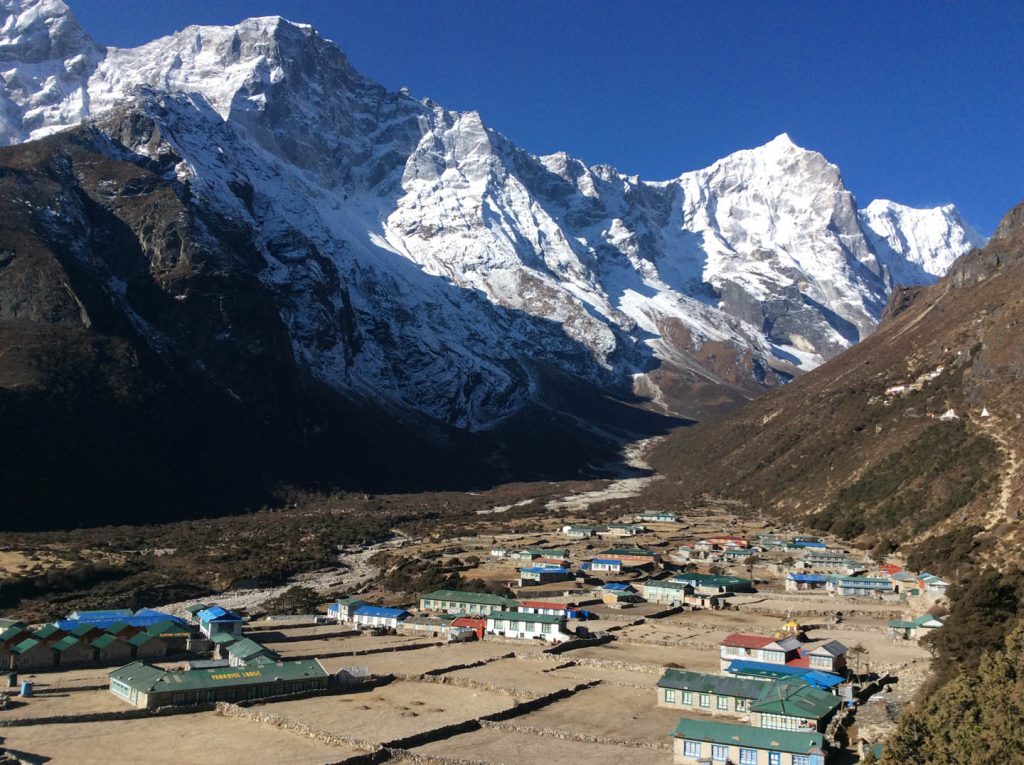
They settled in different places of Nepal like Rolwaling region and Helambu region. However, their main place of settlement went on to be the Everest region, present date Sagarmatha National Park.
After migration, they began with adaptation and gradually adapted to the settled way of life rather than a nomadic one. Their skills in animal husbandry combined with agricultural practices allowed them to grow suitable crops.
They also established small settlements in proximity to the trade route for more opportunities to sustain in the high-altitude area and they naturally became the intermediaries in trade.
Alongside settlement and adaptation, they also experienced a cultural development. They carried their rich Tibetan Buddhist culture and introduced it in Nepal too while making it a cornerstone of their identity.
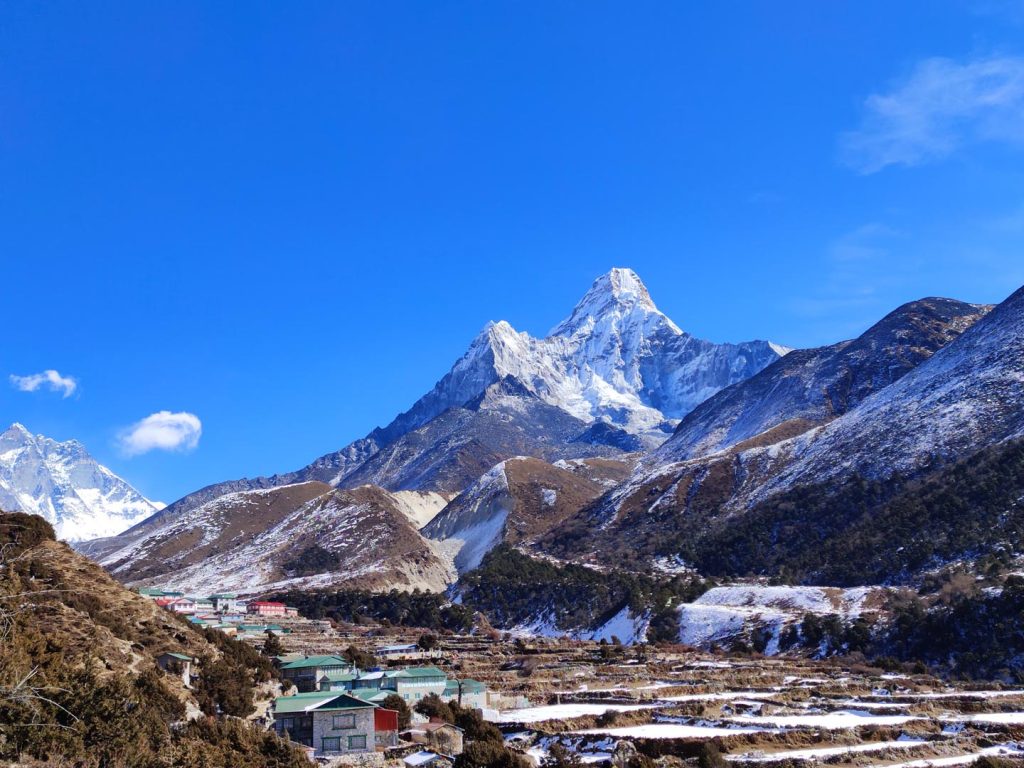
They slowly started setting the foundation of Buddhism and introduced the concept of monastic life followed by the establishments of several spiritual hubs like the Tengboche Monastery.
All thanks to that foundation, we see such strong cultural presence of Tibetan Buddhism around the Himalayas.
The arrival of western expeditors in the Himalayas proved to be a gamechanger for the Sherpas and due to their high knowledge of the region and their physical adaptability and capacity to sustain there, they became an important part of mountaineering expeditions.
Several pioneering climbers recognized the mountaineering prowess of the Sherpas which led to the historic expeditions like that of Tenzing Norgay alongside Edmund Hillary and this eventually led to Sherpas being the mountain masters.
Cultural Heritage of Sherpas
Carrying a hint of historical Tibetan Buddhism, the Sherpa community has rich cultural heritage that has been passed on from generation to generation and shaped by their environment.
The life and culture of Sherpas are based on Vajrayana Buddhism and some testaments of their spirituality are the fluttering prayer flags, the mani walls, the chortens, colorful gompas, and spinning prayer flags in the region.
Their day begins with prayer and meditation sessions and some of their cultures even overlap with the ancient Bon religion, and they have high value for their rituals, mantras, and deities.
The language of the Sherpas is also a part of their heritage as this language, derived from the Tibeto-Burman language family, reflects their Tibetan origins. It is the foundation of their folklore, traditional songs, and oral histories.
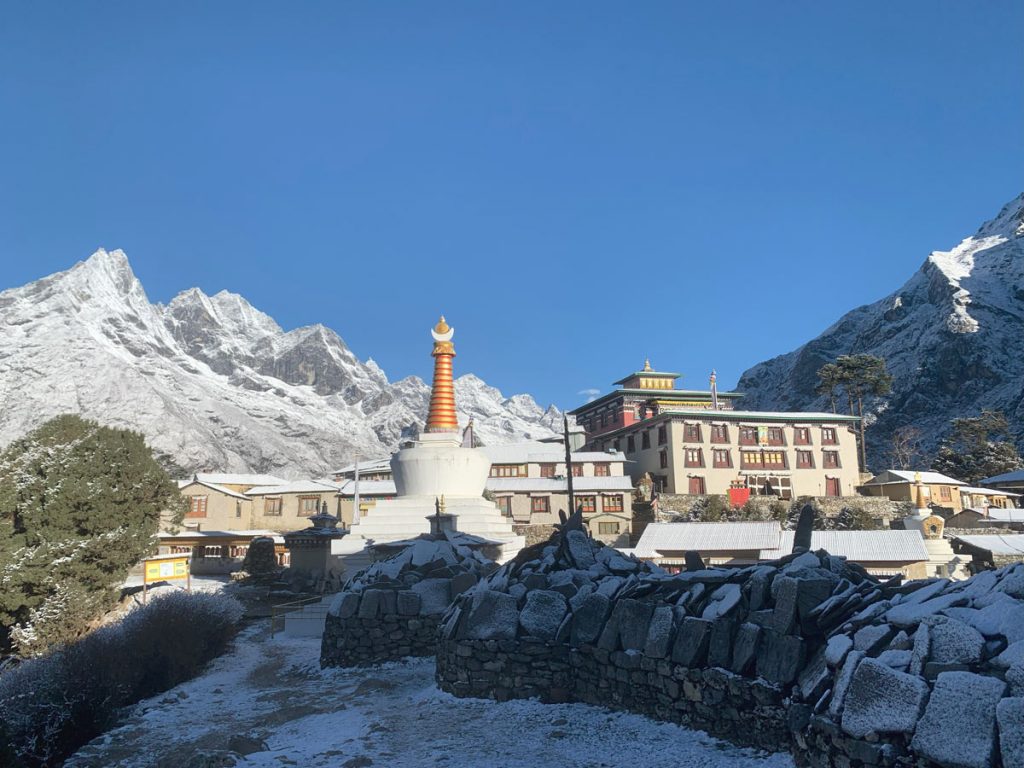
Operating within a clan system, multiple generations of the Sherpas live under the same roof, and they have tight knit family units and clan alliances with the local lamas and elders of the family as their guides, often patriarchal.
They have a strong sense of community, and they are very helpful to each other with cooperative labor ‘mingmar’ being a common practice and people lend a helping hand to each other with everything.
The Sherpas also have several festivals like Mani Rimdu, Dumji, Gyalpo Lhoshar (new year) which are an essential aspect of their life.
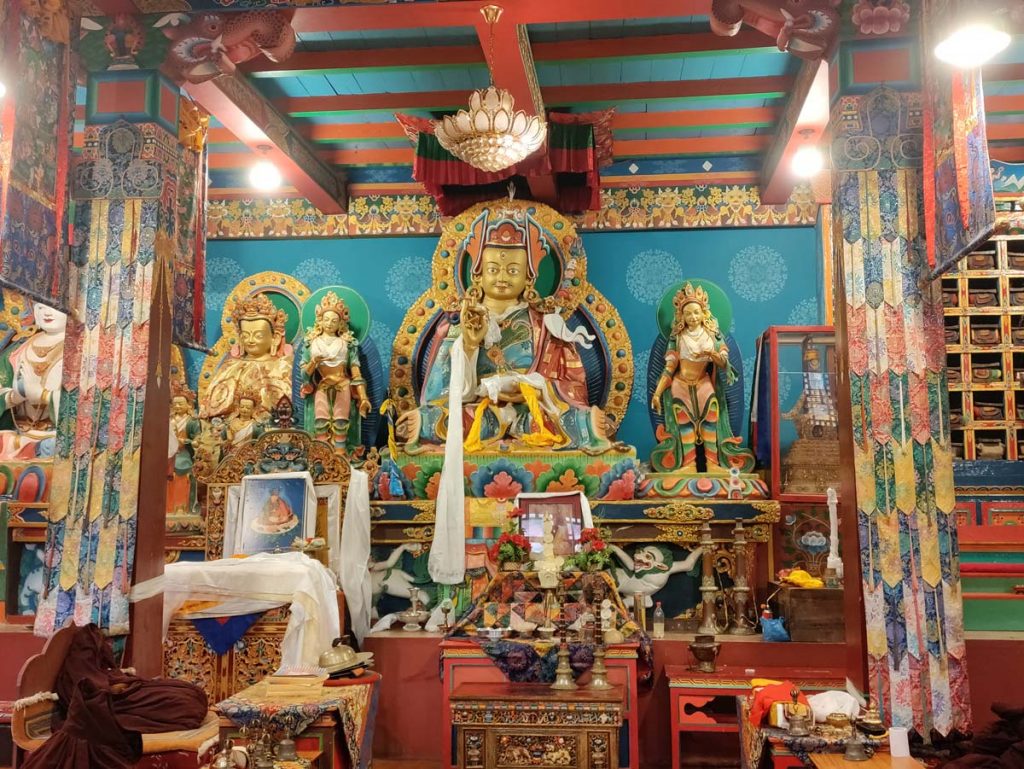
All these festivals are celebrated with elaborate rituals, masked dances, singing, feasting and more during which their entire area comes alive with the vibrant colors and traditions.
The cultural heritage of Sherpas is also reflected in their art and artifacts like the thangkas, traditional hand-woven carpets, their traditional music and instruments, architectural styles, and it is even embedded into the intricate cravings on their prayer wheels and flags.
Connection of Sherpas to Everest
When it comes to Sherpas, the Himalayas and Mt. Everest is not just a formation of rocks and ice or just the tallest peak in the world, their connection with Mt. Everest and the mountains goes much beyond that.
Mt. Everest is referred to as Chomolungma by the Sherpas which means ‘goddess mother of the world’ and this itself is enough to show that the peak is a spiritual abode for them.
Locally, it is believed that deities and powerful life forces reside upon high peaks who take care of the wellbeing of their community and hence must be respected and appeased.
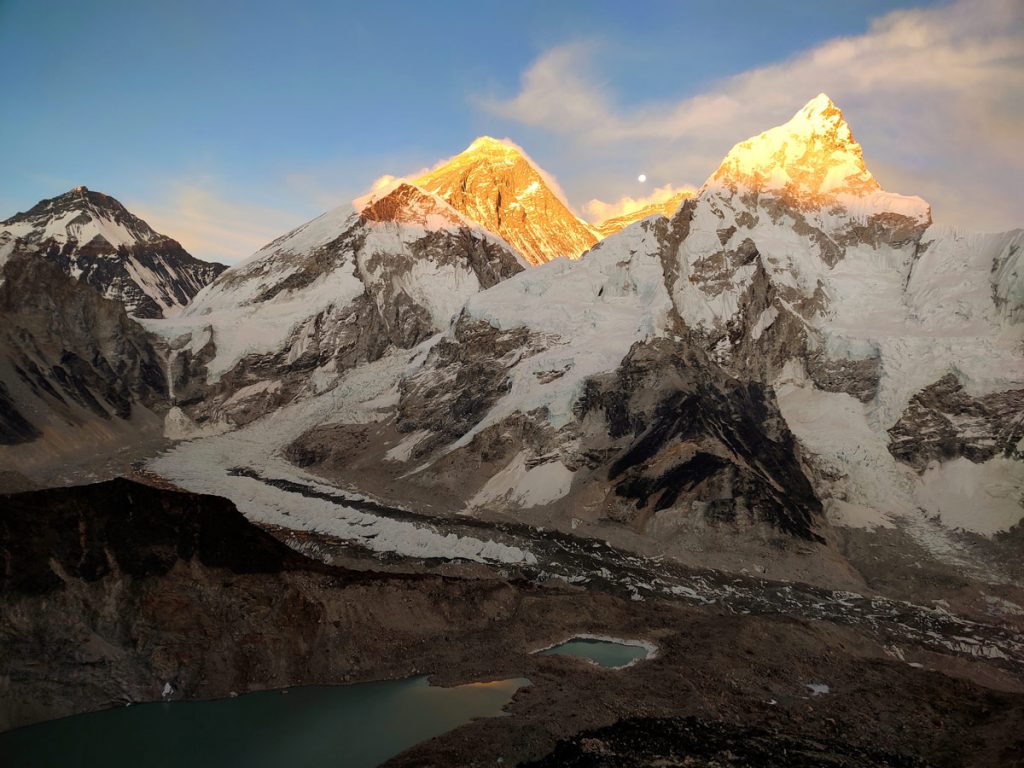
For the same reason, pujas and traditions of gratitude are performed before every expedition, be it Everest expedition or otherwise, to show respect to the might of the peaks and to pray for a safe expedition.
The Himalayan environment has also been the home to Sherpas for so long with the Himalayan resources forming their way of living. The Himalayas have given them a source of livelihood by creating economic opportunities and recognition for their impeccable skills.
Therefore, the Sherpas believe that their fate is intertwined with that of Everest and to protect the land entrusted to them by the ancestors, they turn into the stewards of the region and are at the forefront in cleaning and conservation efforts to maintain the ecological balance in the region.
Role in Mountaineering
Ever since the beginning of mountaineering expeditions in the Himalayas, the Sherpas have been an indispensable part of these expeditions all thanks to their experience of living in the mountains and the deep connection that they share with these peaks.
While the Sherpas were initially hired as porters, their skills of climbing and surviving in these regions slowly made them the backbone of Himalayan expeditions, rightfully earning them the title of the ‘mountain masters’.
Having born and lived their whole lives in the Himalayas, the Sherpas have developed a unique adaptation both mentally and physically and their bodies even have unique genetic predispositions for easy survival in the high-altitude regions.
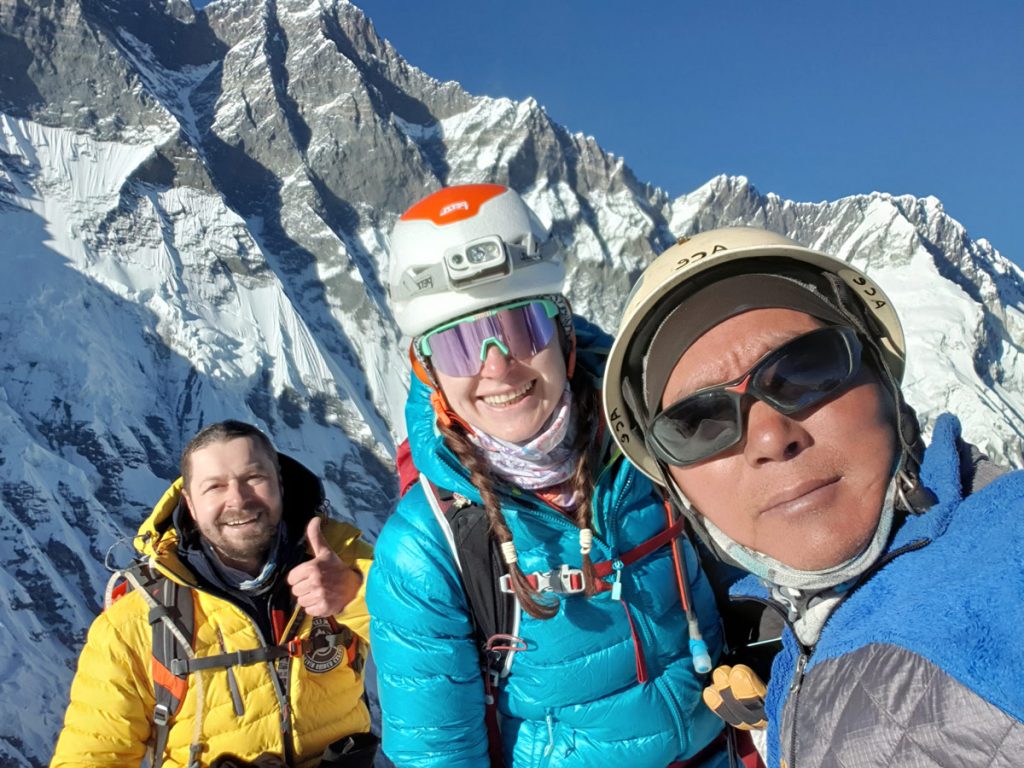
Studies have even shown physiological changes like increased lung capacity, higher production of erythropoietin for RBC production, and other changes that allows them to flourish at higher altitudes.
Because of this and their expert knowledge of the weather patterns, treacherous terrains, avalanche risks, and safe passages of the region, they are the leaders, guides, and major decision makers in modern day mountaineering.
The exceptional climbers that they are with the technical knowledge of using crampons, ropes, ice axes, many Sherpas even hold certifications when it comes to mountain rescue and advanced mountaineering techniques.
For trekkers and climbers alike, Sherpas are the first respondents in case of any emergencies and bring the climbers back to safety while also getting through crevasses and avalanches safely.
The Sherpas are also invaluable in bridging the gap between the climbers and the locals of the region to make the experience of the trekkers much more convenient and fostering understanding and respect.
Sherpas are the unsung heroes of mountain expeditions, and it is only recently that they have started to gain recognition and respect with improvement in compensation that they deserve for their efforts and risks.
Education and Modern Influences
With the influx of tourists, the educational opportunities for Sherpa children have relatively improved going from monastic schooling and informal education to schools with modern curriculum and traditional teachings.
This previously unimaginable feat is the result of many philanthropic activities by the tourists and trekking companies in the region. This has caused many individuals as well as professional influences amidst the Sherpas.
While previously they struggled with communicating with tourists due to the language barrier, the enhanced education system has increased their language proficiency and more and more younger Sherpas are fluent in communication.
The access to technologies has brought the world closer to Sherpas and they have learnt much more about international cultures which can help them within the hospitality business.
Already the stewards of nature, education and modern influences have also equipped the Sherpas with the skillset required for environmental conservation and sustainable development.
However, these advancements have also introduced several new types of challenges amidst the Sherpas like brain drain with educated Sherpas migrating to urban areas which is quite counterproductive.
Besides that, the Sherpa community is also increasingly finding it tough to strike the balance between modernity and preserving cultural heritage.
Challenges Faced by Sherpas
Despite their mountain prowess and resilience, the Sherpas have their fair share of multifaceted challenges including environmental, economic, and cultural issues which at times even pose to be a threat to their lives.
The main challenge lies in living in the Himalayas where despite their adaptability they might come across dangers like avalanches, landslides, icefalls, and unpredictable weather conditions.
Along with this, the weather patterns and melting of glaciers caused due to climate change pose a high threat to the delicate ecosystem of the region which in turn causes physical and economic dangers for the Sherpas.
As the economy of Sherpas is highly dependent on the tourism and mountaineering expeditions of the region, they also tend to become vulnerable during off seasons and during fluctuations in the global tourism trend like during the pandemic or the 2015 Nepal earthquake.
To battle these policies governing tourism in mountain regions, Sherpas have been struggling for better recognition, respect, and treatment.
They are also at high risk of occupational hazards like respiratory issues and accidental injuries whose impacts are further heightened due to the lack of proper healthcare at high altitude areas.
The number of lives lost on Everest is much higher for Sherpas than for climbers as they indulge in more demanding work and even risk their lives to save the climbers and trekkers in the region.
With a huge influx of trekkers and climbers in the region, the Sherpas have even been facing cultural shifts with younger Sherpas being more inclined towards tourism which has instilled a fear of erosion of cultures in the community.
Because of the same trekkers traffic, education in the Sherpa community is another big challenge as most of the times young Sherpas are forced to enter the world of tourism to support their families.
Another major challenge for the Sherpas is the environmental degradation that comes with the tourism as pollution and overcrowding often leaves Sherpas struggling to find the balance between preserving their holy land and the benefits of tourism.
Notable Sherpas in Mountaineering
Being the symbols of courage and resilience that they are, many Sherpas have gained national and international recognition for their unparalleled support in numerous mountaineering expeditions.
The most famous name in this special mention has to be the legendary Tenzing Norgay who was the first person to climb Mt. Everest alongside Sir Edmund Hillary making a history in 1953.
Besides Norgay, the Sherpa community boasts lots of other names who have brought pride to the community by pushing their boundaries.
Appa Sherpa, also known as Super Sherpa, is known for his incredible record of climbing Mt. Evest 21 times between 1981 and 2011 which is the perfect demonstration of the physical prowess of Sherpas.
Inspired by Appa, Kami Rita Sherpa is another Everest Summiting Machine who has climbed the Everest a total of 30 times and holds the record of most ascents to the summit of Mt. Everest.
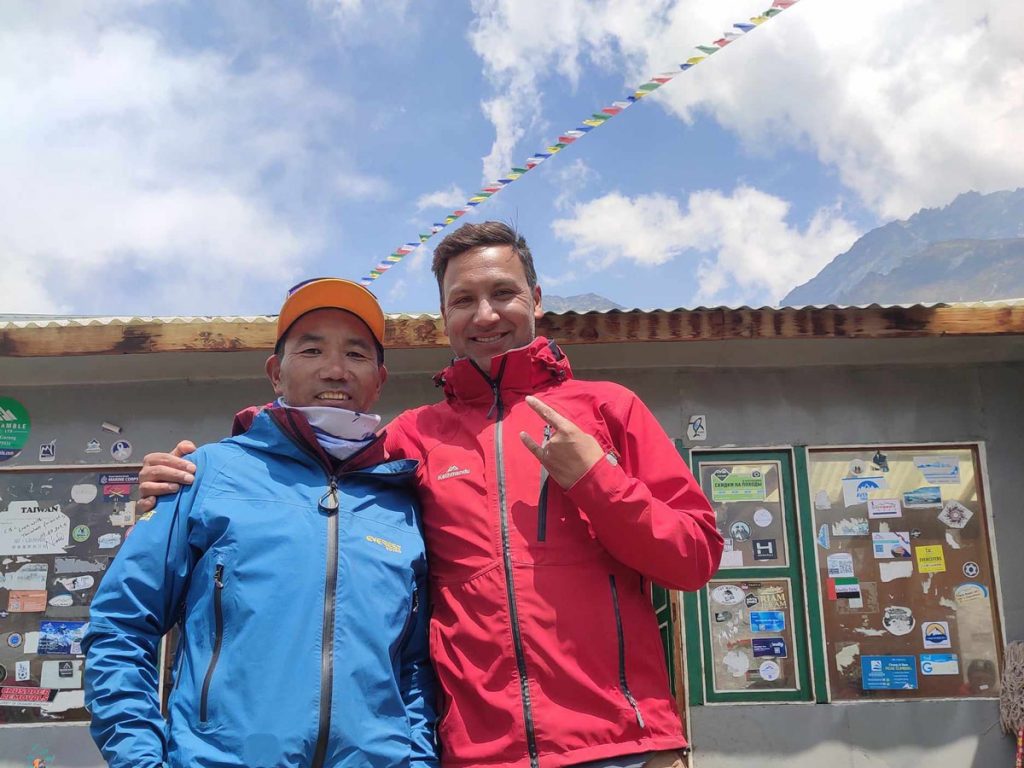
Mingma Dorjee Sherpa is nicknamed the ‘speed demon’ for climbing Mt. Everest and Lhotse within a record time of 6 hours and 1 minute earning him a place in the Guiness Book of World Records.
A significant figure in Nepal, Pasang Lhamu Sherpa is another valuable addition to the list as she was the first Nepali woman to reach the peak of Mt. Everest. She was also the part of the first Nepali women’s team to summit K2.
With the mention of Sherpa women reaching heights in mountaineering, Lhakpa Sherpa cannot be missed. She is the first woman to have summited Mt. Everest a total of 10 times which is the most by any woman in the world!
Conclusion
Along with being high-altitude experts, the Sherpas are also the custodians of a rich heritage with a high resilience and profound conditions with the Himalayas.
However, their future remains intertwined with the future of the Himalayan ecosystem and mountaineering.
Therefore, it is our responsibility to ensure environmental protection to maintain the ecological balance of the region and give them the recognition and respect that they deserve.
